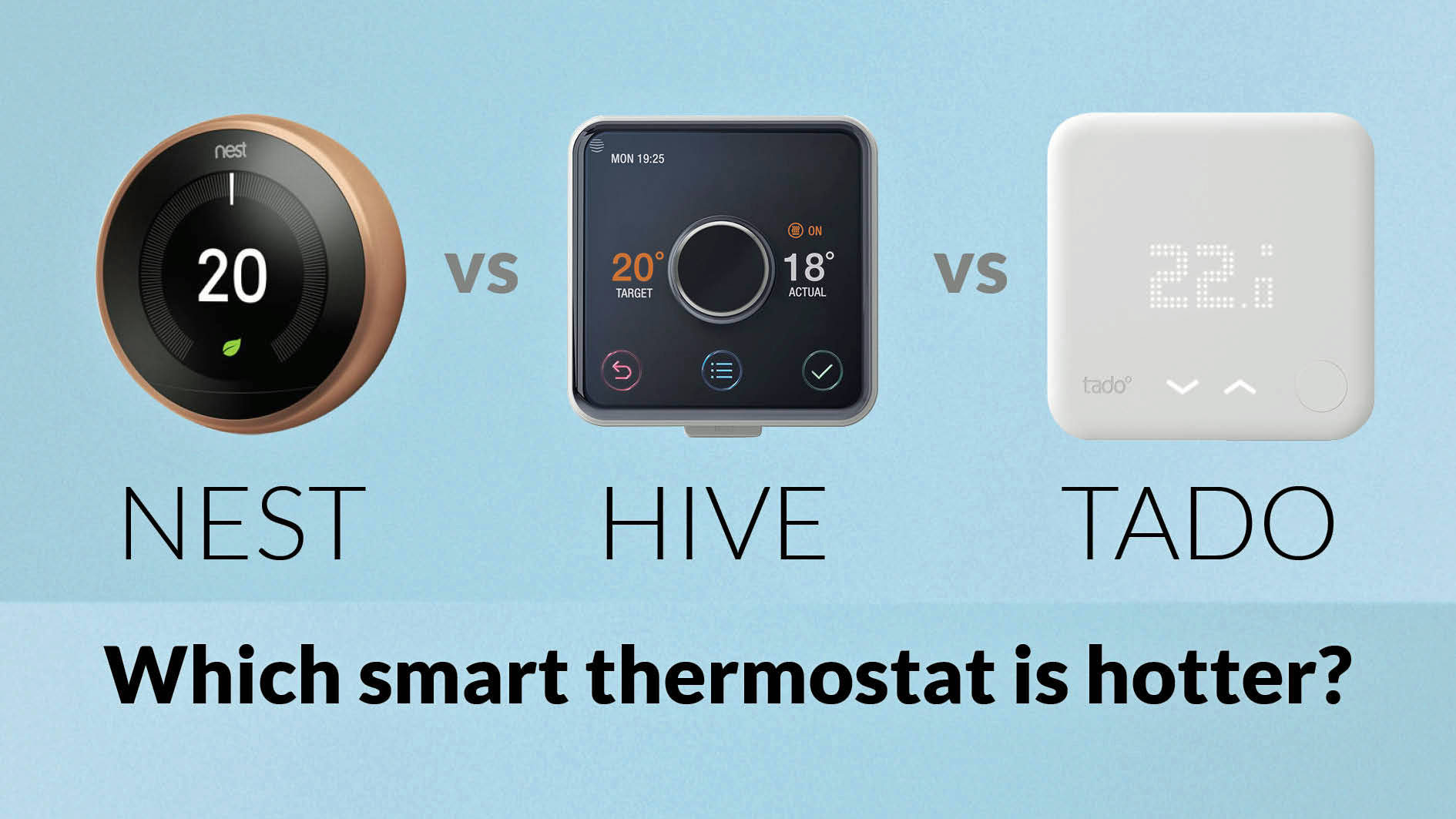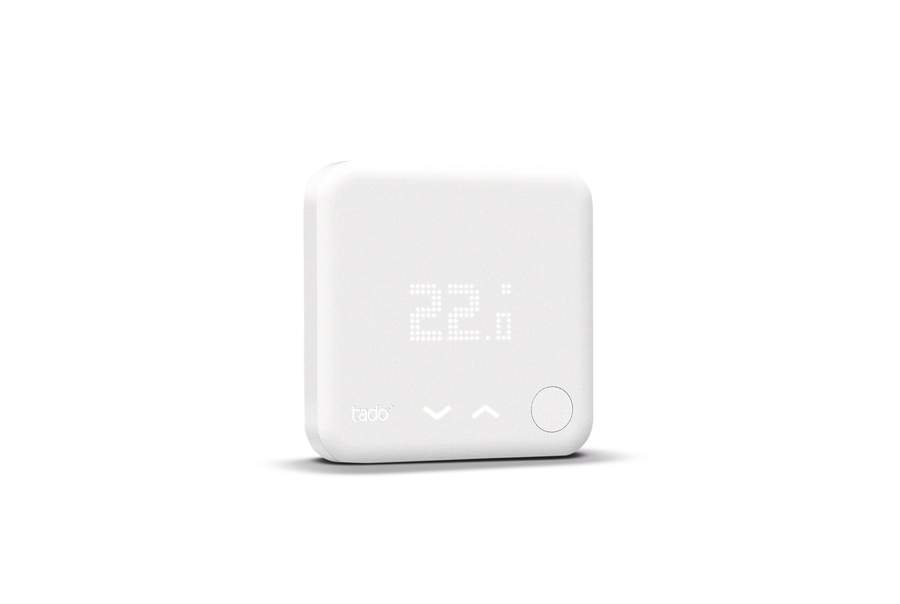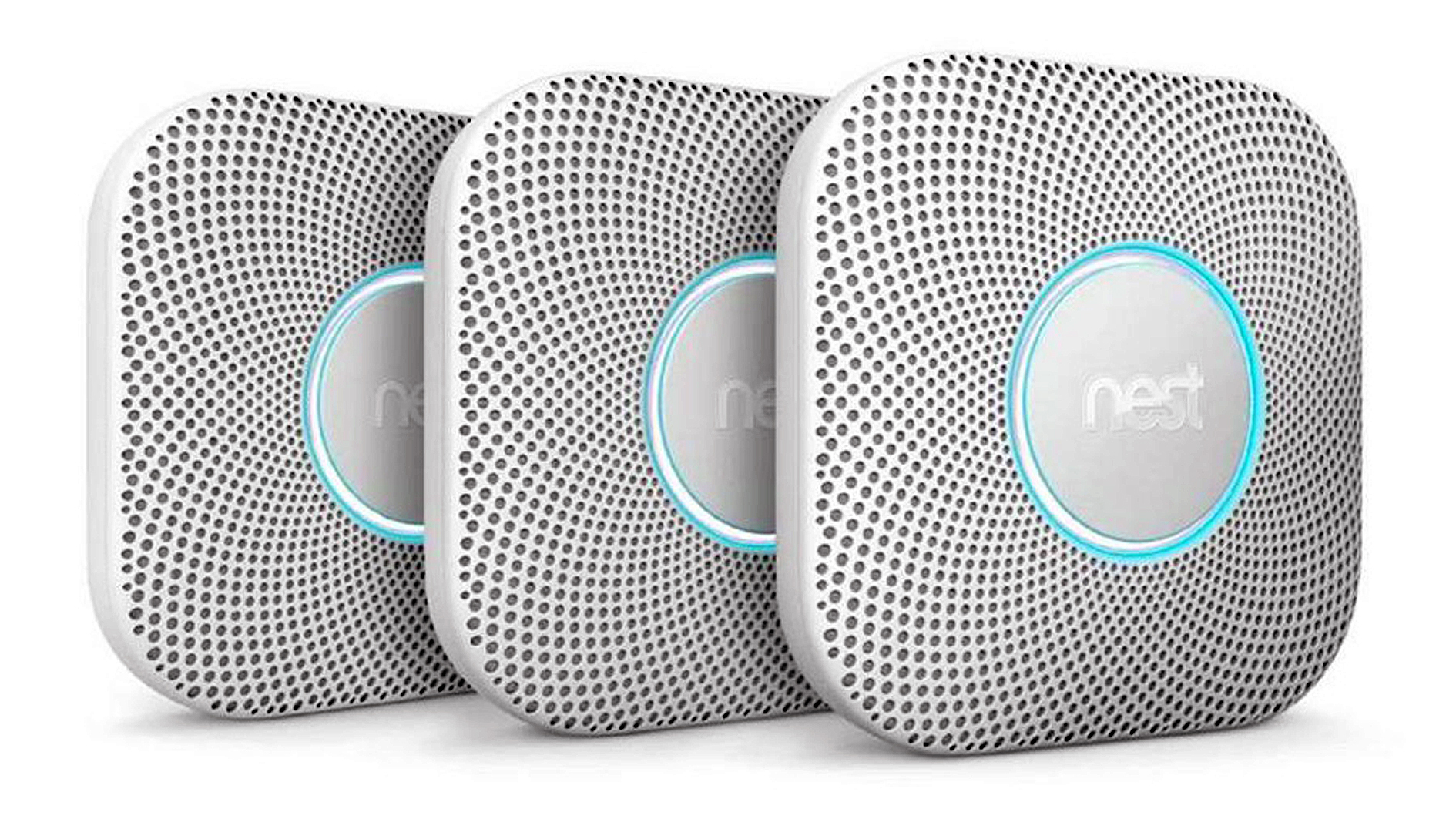Nest vs Hive vs Tado: which smart thermostat is best for you?
It's time to get ready for winter. But which smart thermostat is right for your home and your needs?


Smart thermostats are one of the best upgrades you can make to your home. If a cold snap sees the money draining from your bank account as your central heating blazes, it's probably because you're turning up the heat too early or too late, and heating empty rooms. A smart thermostat could make your home more toasty for less bread.
In our buying guide of the best smart thermostats, Nest, Hive and Tado dominate the list, and there is honestly not a lot to tell between the three platforms. So what’s involved, what can you expect to save and can you control them with Alexa and her Google and Apple rivals? Let’s find out…
- Things getting desperate? Time for the best portable heaters
- Should you buy the Tado Smart Radiator Valves?
- Which Nest is best? Nest vs Nest E
Nest vs Hive vs Tado: will they save me money?
In short: yes, they very probably will.
The USP of a smart thermostat is that it’s like Santa: it knows when you are sleeping and it knows when you’re awake, so it won’t waste money on unnecessarily heating your home. They also tend to know when you're home and when you're not.
As you probably know, there’s usually no need to heat your home if you’re not there and won’t be back for hours, and the smartest smart thermostats can even take the weather into account so it’s not too hot during a warm period, or too cold in an especially chilly snap.
The three systems work in slightly different ways. Nest learns your daily and weekly routines and has a room sensor to learn when you’re not around; Tado and Hive prefer to track you via your phone’s location. The various apps all connect to IFTTT (If This Then That) so you can create your own custom events. You can use the accompanying smartphone apps to change settings remotely, or to have the house toasty for when you get home from work.
Whether you actually save a large amount of money depends largely on how you previously approached your central heating: if you’re the type who only turns the heating on when icicles are hanging from your ears, you’ll see less benefit.
Get all the latest news, reviews, deals and buying guides on gorgeous tech, home and active products from the T3 experts
Whichever type you are, consider this a long-term investment: with Nest’s claimed 10% to 12% savings on heating bills or Hive’s projection of saving up to £130 per year, the average family home will recoup the investment in about two years, and with energy costs only likely to go upwards in the foreseeable future, a 10% annual saving will add up quite significantly over time.
Which of the three is best for saving money? For the average punter, probably Nest, on balance. But it's a close-run thing.
Nest vs Hive vs Tado: how much are these smart thermostats?
There are two costs to consider here: the cost of the thermostat and installation.
For some heating systems there may also be a cost for removing existing technology, so for example smart thermostats can’t be fitted to some systems with existing remote controls if those controls aren’t removed first.
The 3rd Generation Nest thermostat retails for £219 (and can be found cheaper) or £279 with professional installation (plus another £35 if you want a table stand for it.) There's also the slightly cheaper Nest Thermostat E, at £199, which tops our list of the best smart thermostats.
The Hive Active Heating Kit can be found relatively cheaply on its own, but that's only part of the package. It's £249 if you don’t already have a Hive smart home hub (£199 if you do) and that includes installation. Not a bad deal.
The Tado Smart Thermostat Starter Kit officially retails for £199 (though the price as we write this is listed at a chips-cheap £139) and installation is £50. Don't overlook the multi-room package, either; through Amazon you can get the thermostat and a pair of smart radiator valves for £154, which is a great deal. Tado is also adamant that most users can self-install, so this may end up being the cheapest option for most people.
There are also rental/leasing type arrangements for smart thermostats, but it's hard to see why you'd want that. Obviously, it greatly reduces upfront costs, but you'll inevitably end up paying more in the long term.
While we've pointed you to some of the cheapest prices out there, this kind of thing often needs an engineer's touch, so our advice for most users would be to go for a product + installation deal direct from the manufacturers.
Nest vs Hive vs Tado: will they work with my central heating system?

As a rule of thumb, if it has a relatively new programmer or a thermostat you can usually add a smart thermometer with the minimum of fuss.
• Nest’s compatibility guide is here.
• Hive describes the systems it can’t connect to here.
• Tado’s compatibility guide is here.
The Tado church appears to be the broadest, with support for under-floor heating and other more esoteric options. For the 'average' user, any of the top smart thermostats should be fine.
Nest vs Hive vs Tado: how smart home-friendly are they?

All three of these thermostats are part of wider smart home ecosystems – both their own, and third parties' via the likes of Amazon Echo, Google Home and IFTTT.
Nest also offers a smoke alarm, cameras and a video doorbell, and (at least since Google went on a rebranding spree) smart speakers like the Nest Mini.
The Works With Nest programme means it also connects to devices by LIFX, Hue, Wemo, Google Home, Amazon Echo and other key smart home brands (but not Apple’s HomeKit). If you’re wondering why you might want to connect smart lights to your central heating, you can trigger light recipes when Nest detects you leaving or coming home again. It also works with Google Home and Amazon Echo but not Siri.
Tado’s smart thermostat is part of a wider system that includes individual radiator thermostats – arguably the Tado's killer USP, especially for well insulated homes where only a few rooms need heating – and intelligent air-conditioning controllers, and it also works with both Siri and Alexa.
The Hive ecosystem includes remote cameras, window/door sensors, motion sensors, smart light bulbs, plug sockets and even a water leak sensor. It’s compatible with Google Home and Amazon Echo but not Siri.
All three devices’ apps are for iOS or Android; Windows Phone users are out of luck, as usual.
While Nest and Hive fit into much bigger own-brand eco-systems, Tado's compatibility with Amazon Echo and HomeKit, plus the way its smart radiator valves fit seamlessly into the system give it a very slight edge in this department.
Nest vs Hive vs Tado: what features do they offer?
All three offer remote control via smartphone apps and an away mode for when you’re on holiday, but that’s not all they can do.
Nest’s USP is that it learns your routines: over the first few weeks it studies your comings and goings and your heating settings to work out what you need when. It can also pull weather forecasts from your Wi-Fi network to avoid wasting energy on warmer days. In a nice touch the display can show the weather or the time if you’d rather see that than the temperature display.
In short, Nest works as many (non-tinkering) users would wish, without significantly annoying anyone in the process.
Tado enables you to create a multi-room system by adding the aforementioned radiator thermostats and combines geolocation via your phone, and weather forecasts, to predict how much heat you’ll need and when.
You can tell Hive’s British: unlike the others it sees frost protection as a key selling point. Like Tado it can also be part of a wider, multi-room system, but unlike Tado it can’t talk directly to your radiator valves, but Hive Multizone does connect to separate thermostats in modern homes that have more than one heating zone.
Nest vs Hive vs Tado: design
Compared to thermostats of yore, all three of these smart devices are perfectly groomed sex gods, but of the three, the minimalist Tado looks the most 'techy'. It's not unattractive, but it is rather minimalist and stark.
The Nest, by contrast looks like the kind of thermostat Apple might design – particularly in its slick white Nest Thermostat E form – probably because designer and inventor Tony Fadell, its creator, was formerly of Apple.
Hive's Yves Behar-designed box is great too, but if you’re buying a thermostat on its looks, the Nest is the narrow winner here.
So which smart thermostat is best?
As in our buying guide, we would narrowly plump for Nest's hardware as 'the best', as you can either fit and forget it, thanks to the way it learns your routines, or use it as a smart home hub if that floats your boat.
Those who really value simplicity will love Hive's system even more, and it's also a little bit more affordable than Nest.
Finally, those wanting to control a zoned heating system might be best off with Tado's smart thermostat and valves. The valves can also be used independently of the thermostat (ie: you just keep your existing one), which opens up a further range of possibilities.
The fact that the Tado is usually a bit cheaper than its more 'designer' rivals also makes it very enticing.
You can find out more by visiting each device's home site:
• Tado's umm… okay, Tado's website
Writer, musician and broadcaster Carrie Marshall has been covering technology since 1998 and is particularly interested in how tech can help us live our best lives. Her CV is a who’s who of magazines, newspapers, websites and radio programmes ranging from T3, Techradar and MacFormat to the BBC, Sunday Post and People’s Friend. Carrie has written more than a dozen books, ghost-wrote two more and co-wrote seven more books and a Radio 2 documentary series; her memoir, Carrie Kills A Man, was shortlisted for the British Book Awards. When she’s not scribbling, Carrie is the singer in Glaswegian rock band Unquiet Mind (unquietmindmusic).
